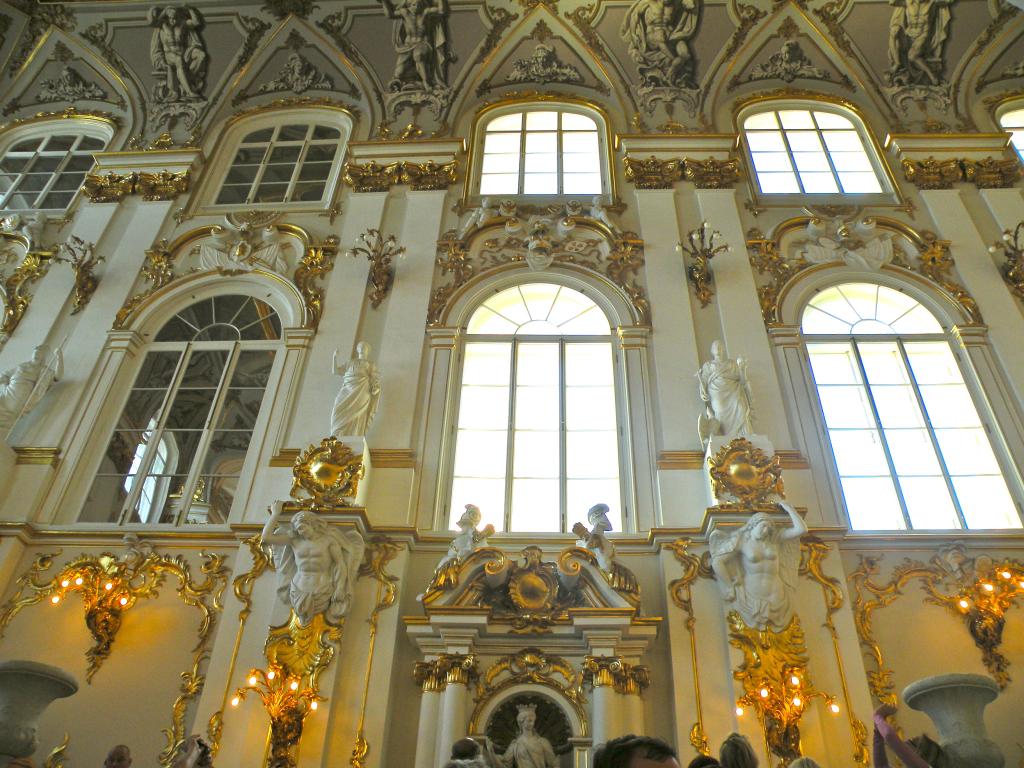First impression. No one will deny the significance of this postulate. Then you can correct, adjust, change the final opinion, but first impressions remain with us forever. The Jordanian staircase, or, as it was originally called, the Embassy, was called to create an opinion about the Great Russian state. Mighty, rich, large-scale.
Creating a masterpiece
Elizabeth, as the true daughter of Peter, understood the importance of the external attributes of the empire, emphasizing its power and status. Therefore, she ordered the demolition of the previous residence of the Russian sovereigns, which after numerous reconstructions had a solemn, non-formal appearance. To build a palace that meets the requirements of the Great Autocracy, commissioned in 1752 by Rastrelli (Bartolomeo Francesco). Inspired by the task, the legendary builder of St. Petersburg created a creation, each room and element of which is a separate masterpiece of architecture and interior design. The Jordanian staircase is no exception. Remembering the special functions, the nominal role was assigned to her: to make the right first impression. The result was truly grandiose.
decidedly the only one in Europe in terms of beauty of location and vastness
- so described the main staircase of the winter residence of A.P. Bashutsky.
Style decision
Towards the end of the 18th century, a baroque wave, covering continental Europe from Italy to Germany and Poland, reached Russia. The main components of the style - pomposity and solemnity - are created due to the special splendor of the decor, the play of light and shadow, theatrical receptions, bizarre proportions and curved dynamics of the lines. This makes the style recognizable from the first moments. Baroque pretentiousness was to the taste of the inhabitants of the Northern capital. The Byzantine past made its additions to the European vision, which was called "Russian Baroque." The Jordanian staircase of the Winter Palace is a vivid representative of this style. The interior of the main staircase was designed and fully embodied by B.F. Rastrelli. Monferan, Kvarneghi, Rossi were involved in the design of other rooms.
Gorgeous and unique
The great Italian with southern temperament embodied the Baroque in the final image of the Jordan stairs, using all the possibilities of style. The central element that harmoniously connects all the variety of decoration - the staircase, is divided into two marches, the curved geometry of which, like flowing jets of water, determines the dynamics of the rest of the space. The lower of the two tiers of the stairs, as the basis, holds the entire composition. The upper tier, due to the abundance of real and false mirror windows, “opens” the perspective, visually pushing the space. All this is crowned with an elegant colonnade and a ceiling, a picturesque continuation of the sky. The fascination with antique statues, characteristic of Baroque, was also confirmed here. At the entrance to the Neva Enfilade, like faithful guardians, the figures of Mars and Apollo froze. In the central niche of the lower tier is the "Power", often called the "Lady". On the north wall are Justice and Mercury. In the east - "Greatness" (Athena), "Wisdom" and "Fidelity." On the south wall are Justice and Muse Erato. The splendor of the interiors is impossible without the appropriate materials. Gilding stucco, marble and granite underline the state status of the Jordanian stairs.

Great fire
The human factor, an open vent, nearly destroyed the creation of ingenious masters. The smell of smoke was noticed in the morning of that ill-fated December day of 1837, but until evening they could not establish the source of the fire. The wooden constructions of the Palace, dried over almost a century, burned for more than 2 days. The Jordanian staircase in the Hermitage, like other interiors, was destroyed.
The restoration was entrusted to V.P. Stasov. Thoroughly and responsibly approaching work, he restored the Embassy stairs.
And again A.P. writes Bashutsky, witness of the original version of Rastrelli, noting that the decoration:
without deviating from her style in her forms, she is perfectly ennobled by the new concept of art with respect to the purity of relief and the correctness of drawing
Changed time required a modern view of history. The main color of the original interior - pink - was changed to a strict gray and classic white color. Gold forged lattice gave way to a carved airy marble balustrade, a military weapons theme was added. Classicism confidently replaced baroque.
Jordanian or Ambassadorial?
How to find the Jordanian ladder in the Hermitage? You need to remember the history of the name. It was built as the Main one, for a long time it acted as the Ambassador. It only became Jordanian once a year, when the imperial family descended along it to the Jordanian ice-hole cut out in the Neva. The last name was fixed, oddly enough, in Soviet times. You can get to it by going through the Jordanian (Ambassadorial) entrance of the Winter Palace, closest to the Neva. Sometimes this staircase is called Sightseeing. Most guests of the Hermitage go through the Winter Palace to it. The main staircase of the museum performs its main task - to make the first impression - to this day, attracting tourists.